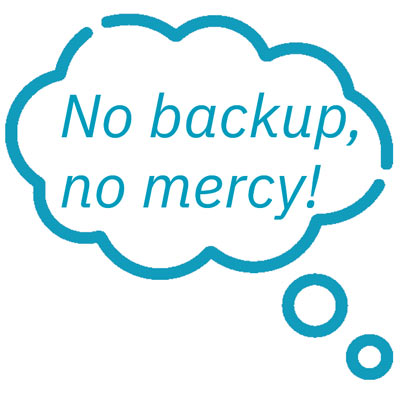In chemical research, where data is often the result of long experiments and extensive analyses, data backup is of critical importance.
The 3-2-1 backup rule is a proven method to prevent data loss and ensure the integrity of valuable research results. This rule states that you should keep three copies of your data. Two on different storage media and one copy at an external location.

The 3-2-1 Backup Rule in Detail
- Three Copies of the Data: In research, this means that in addition to the original data, create at least two additional copies. This redundancy ensures that even in the event of hardware failure or data corruption, backup versions are always available for access.
- Two Different Storage Media: It is advisable to back up the data on two different storage media. This could be, for example, a local server and an external hard drive. Using different media minimizes the risk that both copies could be lost simultaneously due to the same event (such as hardware failure). Do not rely on hard drives only!
- One Copy at an External Location: Store this third copy at a different physical location to protect it from local disasters such as fires or floods. While cloud storage solutions are often chosen, we recommend central storages, for example, at central IT or library services of the university/institution. Because they take care of the server housing and hosting, and the backups.
Example of a Backup Plan
A research laboratory could secure its data as follows:
- Primary Copy: Store the original data on the laboratory server with regularly maintaining and backup procedures.
- Secondary Copy: Store a second copy on an external hard drive or a NAS (Network Attached Storage) located in another room of the building.
- External Copy: Store a third copy in a cloud solution or a central storage.
Advantages of the 3-2-1 Backup Rule
- Security: Data is protected from loss through physical separation and redundancy.
- Access: Researchers can access their data even if one backup medium fails.
- Traceability: Regular backups and the ability to access older versions of the data enable quick detection and correction of errors and data corruption.
What the 3-2-1 Rule Does Not Include
The 3-2-1 rule does not include a backup routine. However, this is just as important because the best backup is useless if it is out of date. Automations (e.g., a cron job) on your servers are best suited for this, copying your data to the secondary storage every night. Or use central services, they already have backup plans.
We hope these tips will help you quickly implement the 3-2-1 rule. If you haven’t already, you should start immediately. Because:
